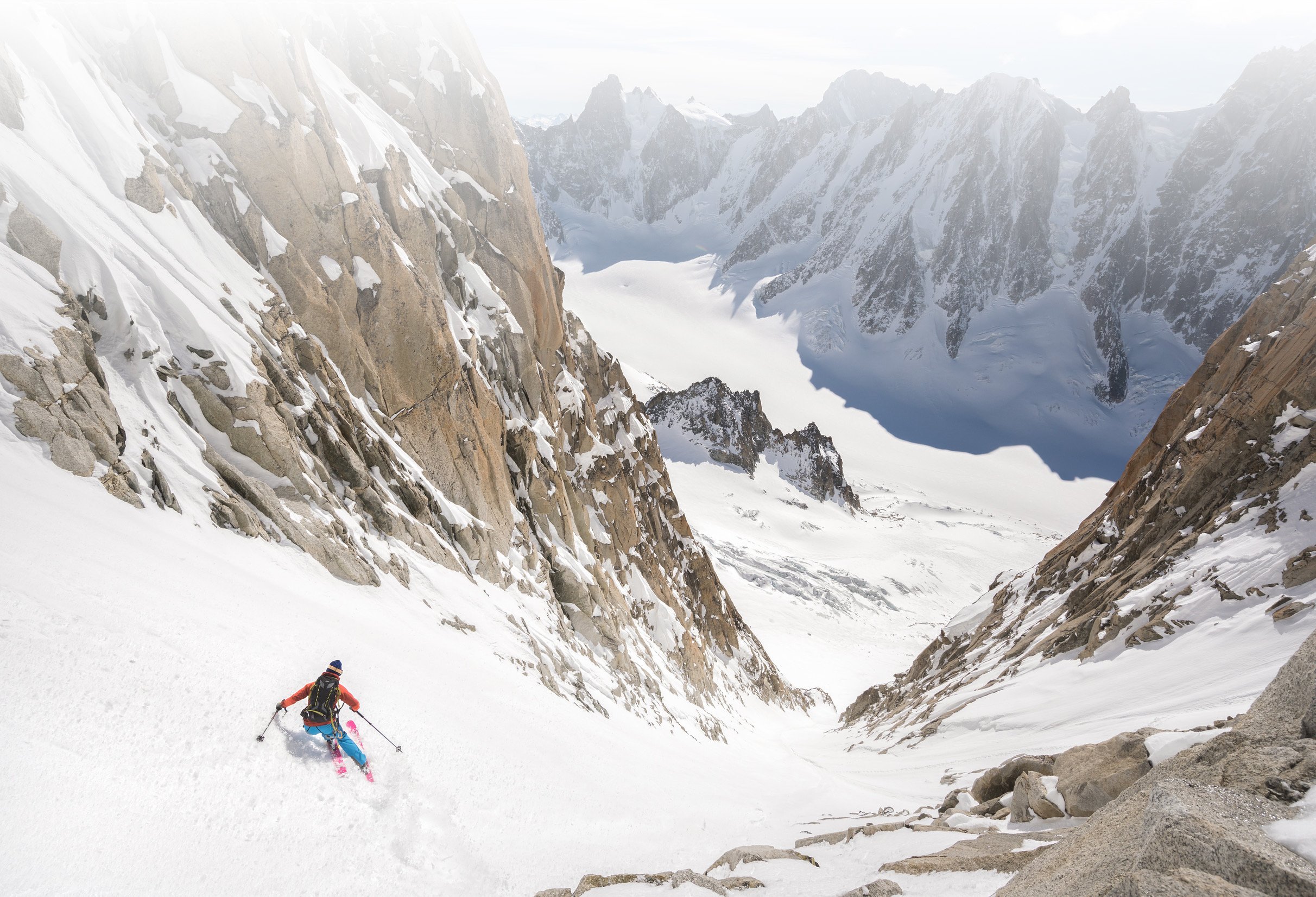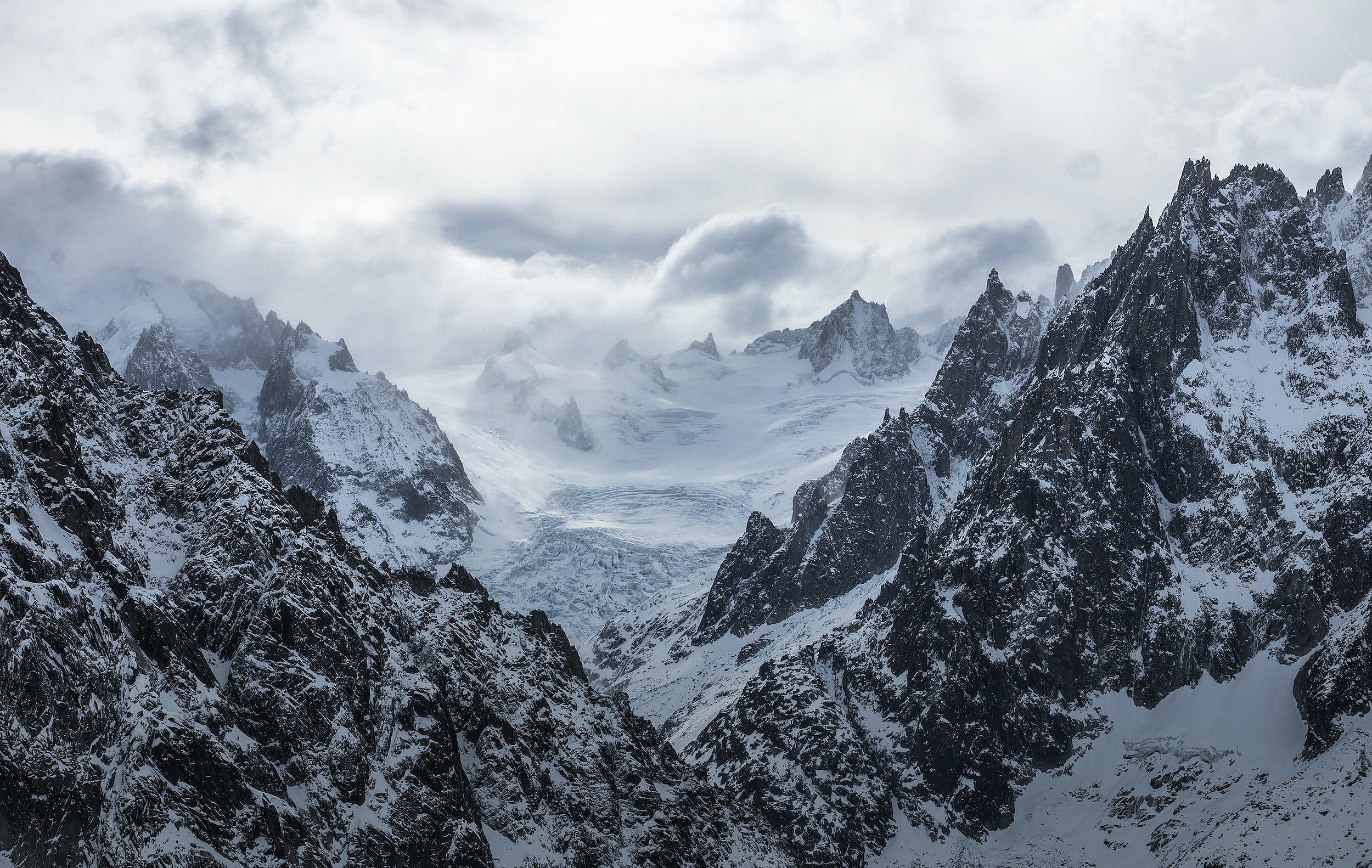
GO BIGThe World’s Biggest Ski and Snowboard Lines
The Biggest Lines
200+ of the World’s Biggest Backcountry Ski Lines
(Click on images or jump to each section for detailed view)
French Alps | Europe | Canada | Alaska | Colorado Rockies | Tetons | The Rest of the U.S. | South America/New Zealand/Japan | World’s Best Ski Tours | Gallery
*IMPORTANT: for optimal use of this website, Biggest Lines recommends downloading the STRAVA mapping software application on your iPhone or iPad (annual membership is approx. USD60). With its high-resolution maps, exceptionally detailed route info, and portable, offline access, STRAVA has become an indispensable tool in the touring kits of both professional ski guides and astute backcountry travelers. For those who plan to spend any time at all in the backcountry, this is money well spent. Click on the logo below to proceed. Note: FATMAPS, in its original form, has sadly been discontinued. STRAVA, its new owner/administrator, is currently working on a new version of the 3D mapping software. While Biggest Lines is disappointed about this development, we eagerly anticipate the release of the new, improved version.
STRAVA
Movement-Maps-Outdoor Guides

LETTER TO THE EDITOR
Dear Biggest Lines,
I am an expert skier or snowboarder. I ski or ride on a regular basis. I’m in great shape. But I’m tired of resort skiing. I’m done with long queues, low angle slopes, and tracked-out snow. I want to go farther. I want to go higher. I want to go steeper. I want to GO BIG!
Where are The Biggest, Steepest, and Most Aesthetic Ski Lines in the World? Is there a MAP that shows their precise locations? A LIST?
What does it take to ski or ride something that big, that steep, that consequential? What kind of GEAR does one need? What about CLOTHING and Training and Fitness?
How do I keep myself Safe? What about AVALANCHE danger? And WEATHER issues? Should I hire a GUIDE? What if I don’t want to risk it all in super steep terrain and difficult-to-manage hazards, but I still want to Go Big?
Thanks Biggest Lines! You are the most complete, most informative, most inspiring backcountry skiing and snowboarding resource on the internet, and your Instagram account @biggestlines is amazing! I can’t wait to to start sharing photos of my own backcountry adventures with you and your followers! Also, who is responsible for all the incredible Photography on this site?
Sincerely,

The Biggest Lines
Ski and Snowboard Glossary
Alpine Skiing (or downhill skiing): is the pastime of sliding down snow-covered slopes on skis with fixed-heel bindings, unlike other types of skiing (cross-country, Telemark, or ski jumping), which use skis with free-heel bindings. Whether for recreation or for sport, it is typically practiced at ski resorts, which provide such services as ski lifts, artificial snow making, snow grooming, restaurants, and ski patrol. (Wikipedia)
Backcountry Skiing, also called off-piste (Europe), alpine touring, or out-of-bounds: is skiing in the backcountry on unmarked or unpatrolled areas, either inside or outside a ski resort's boundaries. This contrasts with alpine skiing which is typically done on groomed trails benefiting from a ski patrol. Unlike ski touring, backcountry skiing can include the use of ski lifts including snowcats and helicopters. Recent improvements in equipment have increased the popularity of the sport. (Wikipedia)
Ski Touring: is skiing in the backcountry on unmarked or unpatrolled areas. Touring is typically done off-piste and outside of ski resorts, and may extend over a period of more than one day. It is similar to backcountry skiing. Ski touring combines elements of Nordic and alpine skiing and embraces such sub-disciplines as telemark and randonnée. A defining characteristic is that the skier's heels are "free" – i.e. not bound to the skis – in order to allow a natural gliding motion while traversing and ascending terrain which may range from perfectly flat to extremely steep. Ski touring has been adopted by skiers seeking new snow, by alpinists, and by those wishing to avoid the high costs of traditional alpine skiing at resorts. Touring requires independent navigation skills and may involve route-finding through potential avalanche terrain. It has parallels with hiking and wilderness backpacking. Ski mountaineering is a form of ski touring which variously combines the sports of telemark, alpine, and backcountry skiing with that of mountaineering. (Wikipedia)
Ski Mountaineering: is a skiing discipline that involves climbing mountains either on skis or carrying them, depending on the steepness of the ascent, and then descending on skis. There are two major categories of equipment used, free-heel Telemark skis and skis based on Alpine skis, where the heel is free for ascents, but is fixed during descent. The discipline may be practiced recreationally or as a competitive sport. (Wikipedia)
Freeriding is a style of snowboarding or skiing performed on natural, un-groomed terrain, without a set course, goals or rules. It evolved throughout the sport's early years as a contrary response to the highly regimented style of ski competition prevalent at the time. Snowboarders primarily refer to freeriding as backcountry, sidecountry, or off-piste snowboarding, and sometimes big mountain or extreme riding. (Wikipedia)
Splitboard: is a snowboard that can be separated into two ski-like parts used with climbing skins to ascend slopes the same way alpine touring or telemark skis are. Unlike normal snowboards, it will have nose and tail clips, split hooks, and touring mounts. Similar to cross country skiing, splitboarding allows free heel movement and with skins attached to the bottom of the skis, provides uphill traction. The two halves can then be connected to form a regular snowboard for descent. Splitboarding culture often focuses on the idea of using your own power to access the backcountry usually on unmaintained trails. (Wikipedia)
Couloir (French: [ku.lwaʁ], "passage" or "corridor"): a narrow gully with a steep gradient in mountainous terrain. A couloir may be a seam, or scar, or fissure, or vertical crevasse in an otherwise solid mountain mass. Though often hemmed in by sheer cliff walls, couloirs may also be less well-defined, and often simply a line of broken talus or scree ascending the mountainside and bordered by trees or other natural features. Couloirs are especially significant in winter months when they may be filled in with snow or ice, and become much more noticeable than in warmer months when most of the snow and ice may recede. These physical features make the use of couloirs popular for both mountaineering and skiing. (Wikipedia)
IPA: is a hoppy beer style within the broader category of pale ale. This style of pale ale, which became known as India Pale Ale, from its origins as an export shipped to India, was widespread in England by 1815. [It’s distinctive taste] benefited exceptionally from the conditions of [long] ocean voyages. (Wikipedia) IPAs are a favorite (and often essential) post-tour refreshment among many backcountry ski and snowboard enthusiasts. (Biggest Lines)
*While this site is geared primarily towards expert off-piste skiers and riders, here are a couple of good websites with tips for the aspiring backcountry skier/snowboarder:
A Beginner’s Guide to Backcountry Skiing and Snowboarding
REI
How to Get Into Ski Touring
Charlie Boscoe
“When I go out I become more alive. It’s probably the endorphins that everyone talks about. And I guess the more you produce, the more you want. And so, I think I’ve been producing a lot for a long time, because I want them all the time. I just love skiing. I love the gravitational pull.”
—the late great Doug Coombs
Legendary mountain guide and adventure athlete. Two time World Extreme Skiing Champion. Alaska heli-skiing pioneer with countless first descents. Very likely the best skier of his generation.

Clearing winter storm, revealing the immense and dramatic beauty of the Vallee Blanche, one of Europe’s largest and most accessible glacial valleys. Glacier du Geant (center), Tour Ronde (middle right), Pointe Yeld (middleground, left), and the Dent du Requin (foreground, right) dominate the scene. Chamonix, France. (photograph: Getty Images)
Cover photo: Local legend Tom Grant in the Y Couloir, Argentiere Basin, Chamonix, France (Ben Tibbetts)













